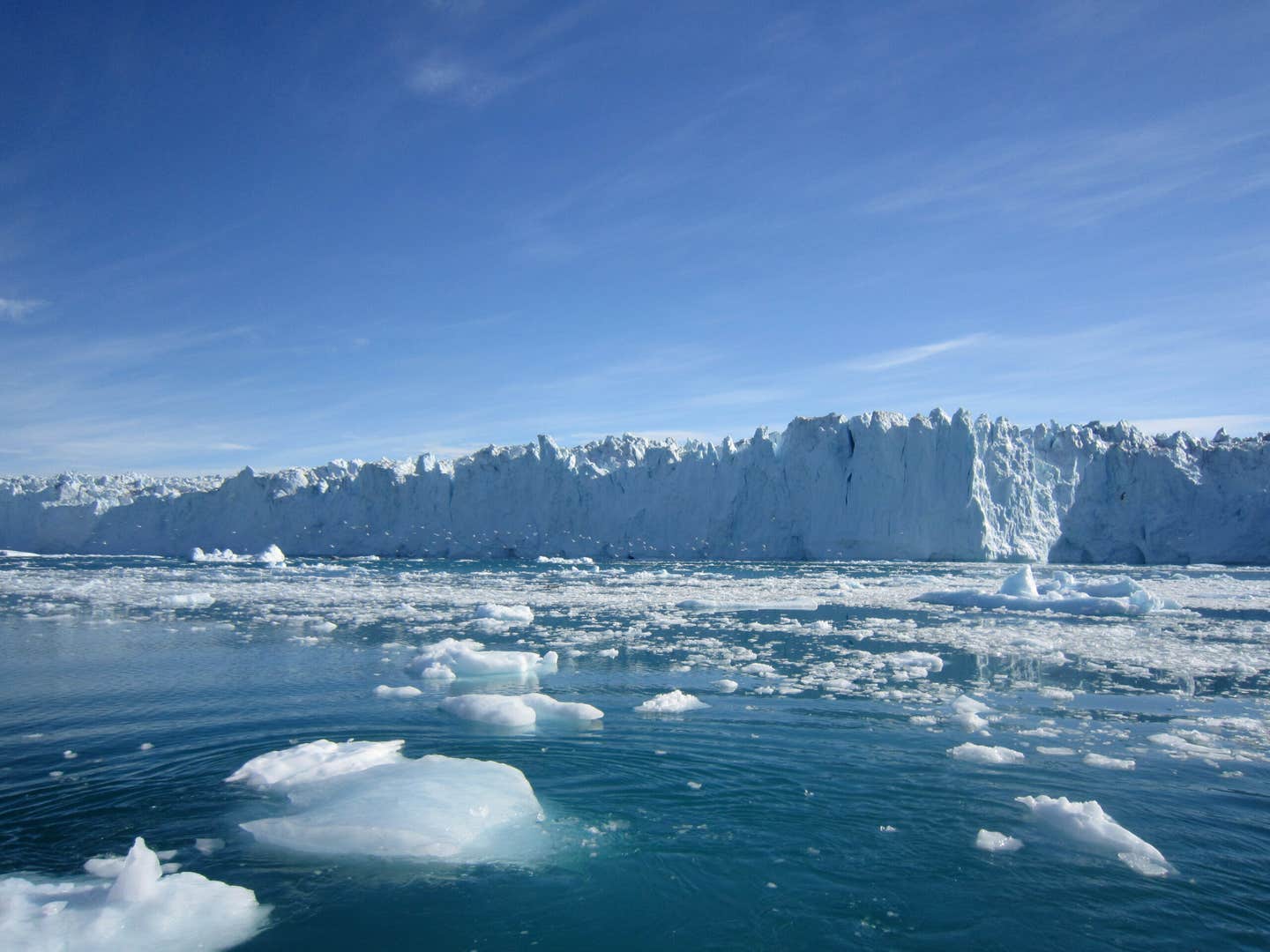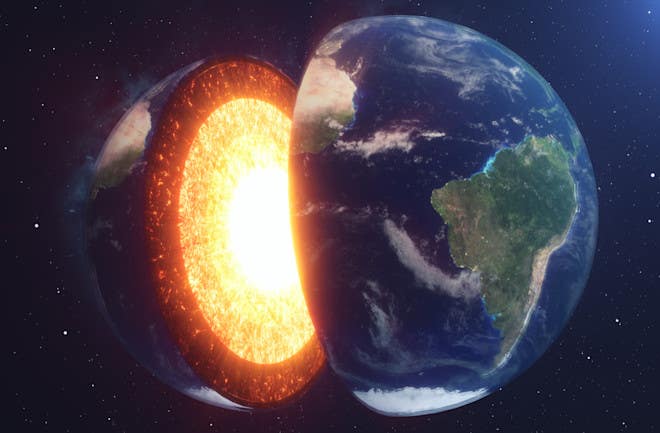Researchers discover how the Earth’s ice caps first formed
Earth’s icehouse state is rare. A new study reveals how tectonics, weathering, and CO₂ levels create ice caps and why they may not last.

Earth’s climate history reveals that ice caps are an anomaly. (CREDIT: CC BY-SA 4.0)
For most of its history, Earth has existed in a greenhouse state—warm, ice-free, and rich in atmospheric carbon dioxide. The ice-covered conditions of today are an exception, shaped by an intricate balance of geological and atmospheric processes.
Scientists have long debated which factors drive these cold periods, and new research sheds light on the rare combination of events that make Earth’s current climate possible.
A study led by researchers at the University of Leeds explores why the planet has spent much of its history without ice caps and why today’s relatively cold climate is unusual.
The findings, published in Science Advances, suggest that no single factor is responsible for Earth’s icehouse states. Instead, a fortunate mix of low volcanic activity, mountain formation, and high global rainfall has created conditions that allow for glaciation.
The Role of Carbon in Earth's Climate
Earth’s long-term climate history is shaped by the carbon cycle. Volcanic eruptions release CO₂ into the atmosphere, warming the planet. At the same time, silicate rocks weather over millions of years, drawing CO₂ out of the air and storing it in the Earth’s crust. The rate at which these processes occur determines the balance of greenhouse gases and, in turn, global temperatures.
Over the past 40 years, scientists have identified several tectonic forces that influence this cycle. The slow movement of continents affects volcanic CO₂ emissions, alters global rainfall patterns, and exposes different rock types to weathering.
Some studies suggest that mountain uplift contributes to cooling by accelerating weathering, though there is little agreement on which factors are most important for triggering ice ages.
Related Stories
Recent advancements in plate tectonic modeling provide new insights into these mechanisms. Using a long-term 3D Earth System Model (ESM), researchers reconstructed changes in solid-Earth degassing and weathering over millions of years. This approach allows scientists to track how Earth’s surface chemistry and climate evolved over time.
How Land Plants Changed Everything
One of the most dramatic shifts in Earth’s climate history occurred with the emergence of land plants during the Silurian-Devonian period. Before plants, weathering rates were relatively low, and atmospheric CO₂ levels remained high. As plants spread across the continents, they accelerated rock weathering by releasing organic acids, which drew down CO₂ and contributed to long-term cooling.
In addition to enhancing weathering, plants also affected carbon burial. Through photosynthesis, they captured atmospheric CO₂ and stored it as organic matter, which later became buried in sediments. This process locked carbon away from the atmosphere for millions of years, reducing greenhouse gas concentrations and cooling the planet.
While plant evolution played a major role in modifying the carbon cycle, subsequent variations in climate were driven primarily by plate tectonics. Shifting continents exposed different rock types to weathering, influencing how much CO₂ was removed from the atmosphere. When continents were positioned in tropical regions with high rainfall, weathering rates increased, amplifying cooling effects.
Modeling Earth's Climate Through Time
To understand the factors that drive ice ages, researchers tested multiple cooling mechanisms using a new type of 3D Earth Evolution Model. This advanced climate simulation, first developed at the University of Leeds, allowed scientists to evaluate how various geological and atmospheric processes interact over millions of years.
The study confirmed that no single process could account for Earth’s cold periods. Instead, icehouse conditions required the combined effects of several factors at once. Low volcanic CO₂ emissions, widespread mountain formation, and enhanced weathering due to high global rainfall all played crucial roles in allowing ice caps to form.
Dr. Andrew Meredith, the study’s lead author, emphasized the rarity of Earth’s current climate state. “We now know that the reason we live on an Earth with ice caps—rather than an ice-free planet—is due to a coincidental combination of very low rates of global volcanism and highly dispersed continents with big mountains,” he said.
Benjamin Mills, a professor at the University of Leeds and the study’s co-author, highlighted the implications for modern climate change. “Earth’s current ice-covered state is not typical for the planet’s history, but our current global society relies on it,” he said. “We should do everything we can to preserve it.”
Lessons for the Future
These findings challenge the assumption that Earth will naturally return to pre-industrial climate conditions after human-driven warming slows. Throughout history, Earth has favored warm climates, with high CO₂ levels and no ice caps. While past cooling events have occurred due to a precise alignment of geological factors, there is no guarantee that such conditions will return on their own.
Human activity is pushing CO₂ levels higher than they have been in millions of years. If greenhouse gas emissions continue to rise, the planet could shift permanently into a greenhouse state, with melting ice caps and rising sea levels. This transition would have far-reaching consequences for ecosystems, weather patterns, and global economies.
The research underscores the importance of reducing carbon emissions to maintain Earth’s current climate balance. While the planet’s long history shows that it can recover from extreme warming, such shifts occur over millions of years—not within the timeframe necessary to sustain modern civilization.
Note: Materials provided above by The Brighter Side of News. Content may be edited for style and length.
Like these kind of feel good stories? Get The Brighter Side of News' newsletter.
Joshua Shavit
Science & Technology Writer | AI and Robotics Reporter
Joshua Shavit is a Los Angeles-based science and technology writer with a passion for exploring the breakthroughs shaping the future. As a contributor to The Brighter Side of News, he focuses on positive and transformative advancements in AI, technology, physics, engineering, robotics and space science. Joshua is currently working towards a Bachelor of Science in Business Administration at the University of California, Berkeley. He combines his academic background with a talent for storytelling, making complex scientific discoveries engaging and accessible. His work highlights the innovators behind the ideas, bringing readers closer to the people driving progress.



